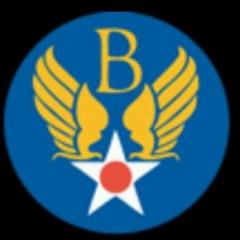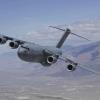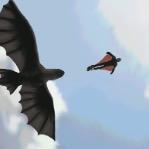-
Posts
384 -
Joined
-
Last visited
-
Days Won
1
Baseops.Net last won the day on November 18 2009
Baseops.Net had the most liked content!
About Baseops.Net
- Birthday 01/10/1973
Previous Fields
-
Qual
Turboprops Pilot
Contact Methods
-
Website URL
https://www.baseops.net
Profile Information
-
Gender
Male
-
Location
Out West
Recent Profile Visitors
38,623 profile views
Baseops.Net's Achievements

Flight Lead (3/4)
8
Reputation
-
Can somebody explain to me how I can delete past attachments since I have reached my Attachment limit and can’t post anymore photos etc.
-
I just wanted to revive this topic. We are deep into the summer PCS season and Dan Stevens is still eager to help answer any VA Loan questions anyone may have.
-
Whoops. Sorry - I'll try and figure this out... standby. OK - I "published" the forums on Tapatalk now. Please let me know if this works... pretty sketchy instructions on their site (they push an "up sell" for Premium Installation).
-
Tapatalk has now been installed on the Forums. The next time you log on via your mobile device, you will see a prompt that lets you know the Forums are now Tapatalk compatible and that you can download the app from the Android Marketplace or Apple App Store. Tapatalk is a mobile app built specifically for forum access. Different from mobile skin or mobile version that comes with the forum system, Tapatalk allows user to have a unified interface to access multiple forums at the same time. www.tapatalk.com
-
This is a good topic to start on the baseops SIPR website... (yes there really is a baseops SIPR site).
-
Not sure why the media and everyone is keying in on his sideline prayers - pro athletes have been praying after touchdowns for many years, yet Tebow is the first to actually be seen in a negative light for praying? Maybe if he had multiple DUIs and illegal firearm charges like most of the stars he'd be more warmly received.
-

IFS and the right sight picture......
Baseops.Net replied to Smokey's topic in Pilot Selection Process
Smokey - any chance you want to contribute corrected / more accurate gouge to the website so that I can replace the out-of-date information? -
Almost everything you need about the course is on the AF portal page for the 45 AS at: https://www.my.af.mi...123772727040040 The course is divided between the simulator phase, currently under contract with Simuflite in Dallas, and the flying FTU at Keesler AFB. The course is relatively fast paced, but not so much as UPT. It's much faster than Altus, lasting 6 weeks. Instructors and evaluators are big pretty big picture, and appear to genuinely care about getting the students qualified in the important aspects of flying the jet, and out the door. Phrases I'd use to describe the 45th while I was in Initial Qual were professional, avoided queep, focused, relaxed, good guys. Rumors are that the FTU may begin including a tactics qual in the near future (info as of Jan 2010). The only Form 8 is from KBIX, and there is no simulator evaluation of any kind, to include final comments on the KBIX form 8. In Dallas, most used to stay in Homewood Suites, Grapevine. Now its mixed - Hilton Southlake, Emb Suites, and some others are good. Families tend to stay at the Great Wolf lodge, as they have an attached water park. Biloxi of course has casino's which have some pretty good concerts.
-
Seymour Johnson AFB, NC is the home to the F-15E Formal Training Unit (FTU) for F-15E student pilots and Weapon System Officers (WSOs). There are two FTU squadrons; the 333rd Fighter Squadron (FS) "Lancers" and 334th FS "Eagles", in addition to two Operational Squadrons; the 335th FS "Chiefs" and 336th FS "Rockets". The squadrons conduct formal training for initial Strike Eagle qualification (Basic or "B" Course), requalification ("TX" or "Transition" course), Instructor ("I") qualification course, and Senior Officer Course ("SOC"). This page deals primarily with the B-Course. Students in the B course are recent graduates of pilot and navigator training requiring current physiological and survival training and an up-to-date Top Secret security clearance. Course duration is 160 days; 41 ground training days, and 119 flying training days. With weekends and holidays accounted for, this equates to roughly seven months of training. The course consists of 305 academic hours, 107 aircrew training device hours (simulators and device trainers) and 44/41 sorties (pilot/WSO). Students must complete a minimum of four simulators and five academic courses and tests before their first sortie. In general, student WSOs (SWs) will fly in the Rear Cockpit (RCP) of the Instructor Pilot (IP) flight lead and Student Pilots (SPs) will fly with an Instructor WSO (IWSO). Exceptions to this are when SPs are required to fly with an IP in the RCP (until landing proficiency is demonstrated and on sorties where new events are introduced such as BFM, formation takeoff and landing, and low altitude/range operations), and when students fly together as 'crew solo'. Breakdown for sorties is as follows: TR (Transition) phase: 7 rides for student pilots (SPs), four rides for student WSOs (SWs). TR-1 is a single-ship for SP only as F-15E orientation. TR-2 and TR-3 are flown as 2-ship with SWs in the RCP of the IP (lead) aircraft. SPs will fly with an IP in the RCP until they are cleared 'crew solo' on TR-3. TR-4 is a 'crew solo' ride, meaning the SP and SW fly together in the same aircraft – the profile starts with them in the wingman position for the first half, then they take the lead for the second half and are chased by the instructor crew. TR-5 is single ship for the SP in preparation for the TR-6 checkride. Pilots take their "Form 8" checkride on their sixth TR ride. This ride is a single-ship sortie with an Instructor Pilot (IP) Flight Evaluator (FE) in the Rear Cockpit (RCP). Mission preparation includes manual creation of a Form 70 (fuel calculations), and DD-175 flight plan. EP and GK for the ride are at the discretion of the FE. The sortie is generally a local "round-robin" profile which includes departure to local operating airspace for G-Exercise, aerobatic maneuvers (AB loop, pitchback, sliceback are standard), and unusual attitude recoveries. Following area work, the student will proceed to a local out base (Langley AFB, NAS Oceana, Shaw AFB, NAS Norfolk, Charleston AFB, NAS Cherry Point) for a fix-to-fix to the holding fix, one turn in holding, instrument penetration to an instrument approach. A minimum of one precision and non-precision approach must be flown during the sortie (desired three – PAR, ILS, and TACAN or localizer) and missed approach, though the order may be left up to the student. Following the outbase approach, student will RTB to Seymour Johnson to finish the remaining approaches and conduct normal and emergency patterns (only one of each is required for the ride). The checkride is much more "big picture" than UPT checkrides, with an average of less than one downgrade per ride. A prerequisite for this sortie is the eight sortie, a Form 8 Emergency Procedure (EP) simulator which is tracked in the same manner as the checkride. The last ride in the TR phase is the 2-ship Advanced Handling Characteristics (AHC) ride which explores the edges of the F-15E flight regime. Aerial Attack (A/A) phase Students fly three Offensive Basic Fighter Maneuver (OBFM) and three Defensive BFM (DBFM) sorties. On the first of each of the sorties, SPs will fly with an IP and SW will essentially see the opposite profile (they see DBFM when SP flies OBFM and vice versa). The second and third of each of these sets of rides is flown as crew solo. Students must Demonstrate Proficiency (Demo Pro) on the third OBFM and DBFM sortie. Next is one defensive and one offensive Air-Combat Maneuvers (ACM) ride which puts the student 2-ship against one "bandit" within visual range. Demo Pro is not required for ACM, though certain items within the ride require proficiency (weapons employment, for example). The next two rides are "Element Threat Reaction" (ETR). ETR-1 is a notch-press ride and ETR-2 is a medium-altitude Surface-to-Air (SA) threat reaction ride. Demo Pro is not required on these rides. The final four rides in the A/A phase are 2v2 tactical intercept or "INT" rides where students employ as a 2-ship against a 2-ship of red air. The final ride is a Demo Pro ride. Students are required to conduct air-to-air refueling (AAR) a minimum of two times at some point during the syllabus, and generally accomplish this during the A/A phase. Surface Attack (SA) phase The SA phase introduces the students to low altitude (LOWAT - 500 feet above ground level (AGL)) maneuvering, LOWAT intercepts, range and air-to-ground (A/G) weapon operations, and Close Air Support (CAS). During range operations, students drop BDU-33 (25 lb practice bombs), inert (non-warhead) Mark-82 500 lb bombs and inert GBU-12 laser-guided 500 lb bombs. Simulated weapons include Mk-82, Mk-84, GBU-12, GBU-10, GBU-24, and JDAM (Joint Direct Attack Munition). The phase begins with Low-Altitude Step Down Training (LASDT) which introduces the student to low-level flight and range operations. Throughout the remainder of the phase are two additional LASDT sorties (one for LOWAT 1v1 intercepts and one for LOWAT 2v2 intercepts), and seven SA sorties which emphasize low-level tactical formation and Terrain Following (TF) flight, threat reactions, range operations, and weapons deliveries. The seventh SA sortie is the WSO Form 8 checkride. Mission preparation includes low level mission and attack planning and briefing. WSOs must demonstrate proficiency in planning, briefing, and target attack. The final two SA sorties are day CAS sorties simulating JTAC (Joint Terminal Attack Controller) coordination and TST (Time Sensitive Targeting), with the second being Demo Pro. Three of the surface attack sorties are flown as crew solo (one TF sortie, one SA sortie, and one CAS sortie) Night phase The night phase has two (N)TR rides and four SA night (SAN) rides. All night sorties are flown with Night Vision Goggles (NVGs). Students are required to conduct night AAR a minimum of two times during this phase. NTR introduces night operations, formation, and night overhead patterns and landings, while NTR-2 introduces night 2v2 intercepts and requires student pilots to demonstrate proficiency in night landings and formation. SAN-1 and 2 are night low-level sorties flying off the TF system and conducting attacks on and off the controlled range. SAN-3 and 4 are night CAS sorties; a repeat of the final two day SA rides, only at night (SAN-4 is flown as crew solo). Surface Attack Tactics (SAT) phase The final three rides in the program are SAT; tactical scenarios that incorporate simulated A/G and A/A threats, mission packages, targets, and TOT (Time on Target) windows. The last two SAT sorties are flown crew solo and may employ actual heavyweight (though inert) weapons. Approximately six weeks prior to graduation, student assignments are decided. The three operational F-15E locations are Seymour Johnson AFB, Mountain Home AFB (Idaho) and RAF Lakenheath (England). Students rank-order their requested bases and assignments are almost exclusively decided from class performance, though officership and flight commander ranking do factor into the overall score.






